Plan the perfect Iceland solo travel trip with a tried & tested itinerary plus tips to slash the cost of your visit.
Iceland is one of the most spectacular places on the planet.
Its otherworldly landscape is studded with volcanoes, glaciers and snow-capped mountains. In addition to its almost mystical natural beauty, you can soak in a hot spring by day and chase the elusive Northern Lights by night.
But did you know that Iceland is also one of the best solo travel destinations on earth?
Get the lowdown on visiting Iceland as a solo traveller, including money-saving tips and an oven-ready Iceland itinerary.
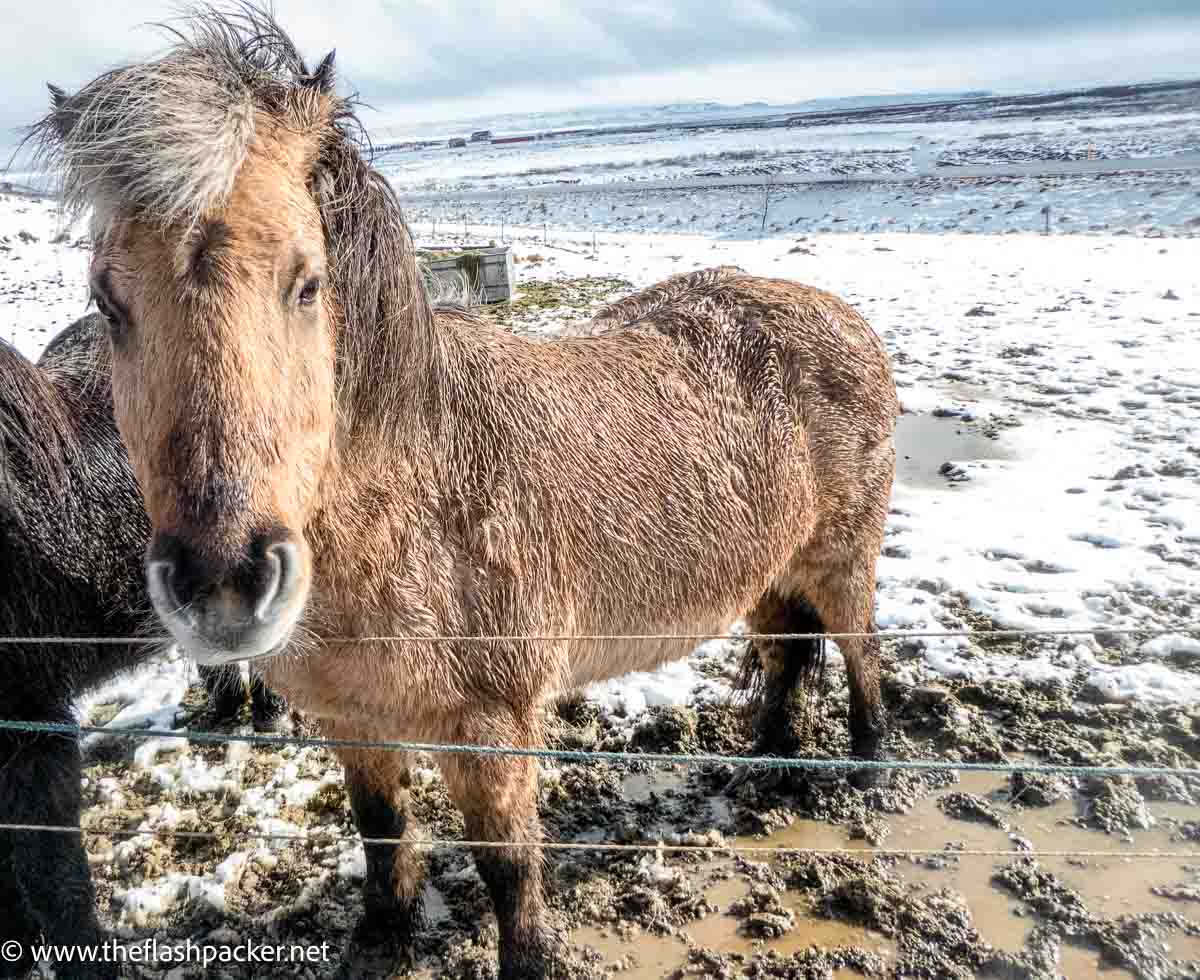
Some articles on this website contain affiliate links. This means that I may earn a small commission if you make a purchase through these links. As an Amazon Associate, I earn from qualifying purchases. Read the full disclosure here.
Dreaming of your first solo trip? Click here to download your FREE solo travel toolkit.
It’s just what you need to kickstart your plans!
Why Iceland is a Great Solo Travel Destination
Iceland is not only a superb place to travel solo in Europe, but also one of the best global destinations for single travellers. This is especially the case for solo female travellers and those who are on their first solo trip.
Safety is one of the main concerns of solo travellers, particularly women who are travelling alone. The crime rate in Reykjavik is so low to be almost zero.
Therefore, there is little chance of you getting robbed or being subject to physical risk. Harassment is also rare.
As a solo traveller in Iceland, it is easy to book excursions to suit your tastes online or via one of the agencies on Laugavegur in downtown Reykjavik. Iceland is also a mecca for outdoor activities.
And if you want to treat yourself, Iceland is made for splurging. Linger over a meal at one of Reykjavik’s excellent restaurants or buy that handmade Icelandic jumper you have been eyeing up.
>>> Start planning your solo trip to Iceland with these inspirational quotes about travelling alone.
When to Visit Iceland
There is no absolute right or wrong time of year to visit Iceland.
Iceland’s average temperatures are higher than you might expect, given its position in the North Atlantic Ocean. Thanks to the moderating effect of the Gulf Stream, Reykjavik’s average winter temperature is 0 degrees; in summer this reaches a giddying 12 degrees.
But, for me, the bigger consideration is the number of daylight hours. In midwinter, the sun doesn’t rise until 11.45 am, setting again at 2.45 pm. Whilst this might be optimal for Northern Lights chasing, it limits daytime activities.
Contrast that with mid-summer. Here, we are looking at 24-hour light, with the sun setting at midnight, and twilight persisting until it rises again at 3 am.
Therefore, the time of year that you visit Iceland may largely depend on the number of daylight hours that you feel comfortable with, and whether you want to see the Northern Lights.
In my view, Feb/March or Oct/Nov are good times to visit Iceland. There are enough daylight hours to allow you to sightsee, but you will also be able to see the Northern Lights if they decide to come out to play.
When I visited Reykjavik in March, there were around 11 hours of daylight.
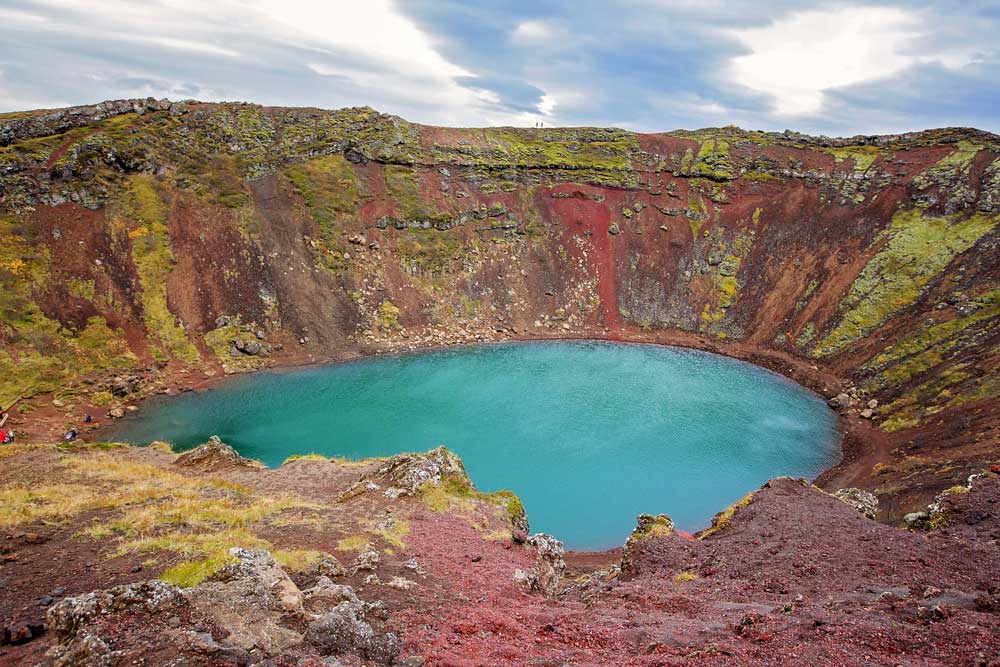
Your Iceland Packing List
What you should bring
First and foremost, warm clothing, whatever time of year you are visiting Iceland. This means a hat, scarf, gloves, layers and a warm, preferably windproof, coat.
A refillable water bottle. Don’t buy bottled water when you are in Iceland.
Not only is this not eco-friendly, but it is also completely unnecessary. Icelandic water is pure and delicious straight out of the tap. Just let the water run for a minute before filling your bottle.
Zip-Loc freezer bags for your packed lunch. More on that later.
What to leave at home
Your umbrella. Seriously. Those Arctic gusts spell instant death for brollies and carrying one will instantly mark you out as a tourist.
Money in Iceland
Iceland’s currency is called Króna (ISK). Due to the lack of subdivisions, get used to seeing lots of zeros.
It’s worth noting that the Króna has no value outside of Iceland. Therefore, you should not exchange large amounts of currency, and you should change it back before you leave.
Also, as you are unlikely to be able to get hold of Króna in your home country, you will need to change currency on arrival. It’s best to do this in downtown Reykjavik rather than at the airport.
The good news is that Iceland is almost a cashless society. Credit cards rule supreme and can be used for even the smallest of purchases.
I did not change any currency and used my credit card for the entire duration of my trip to Iceland. But check that your credit card provider will not charge you an extortionate fee for using your card overseas.
Iceland Solo Trip Costs
Iceland is an expensive country in which to live.
Accommodation and food & drink are much to blame. Eating & staying in Reykjavik will cost you 44% more than the average in the EU.
However, booze is the real budget-buster. A glass of your favourite tipple is likely to cost 123% more than it would in an average European country.
But fear not. Even when travelling alone, it is possible to visit Iceland on a mid-range budget without resorting to staying in a hostel or letting a single Pot Noodle pass your lips.
How to Save Money When Travelling to Iceland as a Solo Traveller
Let’s take a look at how a solo traveller can visit Iceland on a budget.
Accommodation in Iceland: Money-saving tips for solo travellers
Accommodation in Iceland does not come cheap. To save money on lodgings, conventional wisdom applies:
- Book early
- Get the best possible deals by using price comparison websites, for example, Google Hotels.
- Consider self-catering accommodation, through Airbnb or Booking.com. This will also save you money on food.
That said, I did the opposite.
I got a great deal three weeks before departure with BA Holidays.
This bundled flights at convenient times and to/from convenient airports with a centrally-located three-star hotel that included breakfast. The deal cost marginally more than the hotel alone if I had booked these separately.
Eating out in Iceland: Money-saving tips
Eating out in Iceland is relatively expensive.
A main course in a mid-range restaurant will set you back between 2,000 and 4,000 ISK. For this reason, Icelanders consider dining out to be a treat.
Here are my top tips for solo travellers to save money when eating out in Iceland.
- Bring some snacks from home. Whatever your fancy, these are good for munching on when you are feeling peckish or to form part of a packed lunch on the go.
- Bag a good hotel deal that includes breakfast. Not only will this set you up for the day ahead, but you may be able to assemble a packed lunch. Trust me … I wasn’t the only person doing this at breakfast. Whilst I was at least trying to be discrete, a group of four at an adjacent table had a production line going, complete with proper sandwich bags. I was seriously impressed.
- Alternatively, stay in self-catering accommodation where you won’t be reliant in dining out.
- When in Reykjavik, keep your eyes peeled for lunchtime lunch deals.
- Tipping is not expected in bars and restaurants in Iceland
Saving money on alcohol in Iceland
Alcohol is eye-wateringly expensive in Iceland. A local beer, for example, is likely to cost 1,000 ISK. Reckon on spending at least 1,400 ISK for a glass of unremarkable wine.
Despite this, Reykjavik has a vibrant bar scene and you should not deprive yourself of the chance to try the excellent local beer. But, if you’re not careful, alcohol can make your trip to Iceland expensive.
Here are my tips on how to reduce your Iceland trip costs when it comes to booze but still have a good time.
- Keep drinking out to a minimum
- Instead, buy booze before arriving at your accommodation. Pack alcohol in your checked luggage or buy a bottle or two at Duty-Free in your departure airport. Or do as the Icelanders do and stock up in the Duty-Free shop in the Arrivals area at Keflavik Airport.
- Don’t rely on buying alcohol from a supermarket. Prohibition was only fully repealed in Iceland in 1989 and its accessibility is relatively limited. It can only be purchased in state-run off-licences (ÁTVR), which are only open during office hours.
- If you are drinking out, take advantage of the numerous happy hours around Reykjavik.
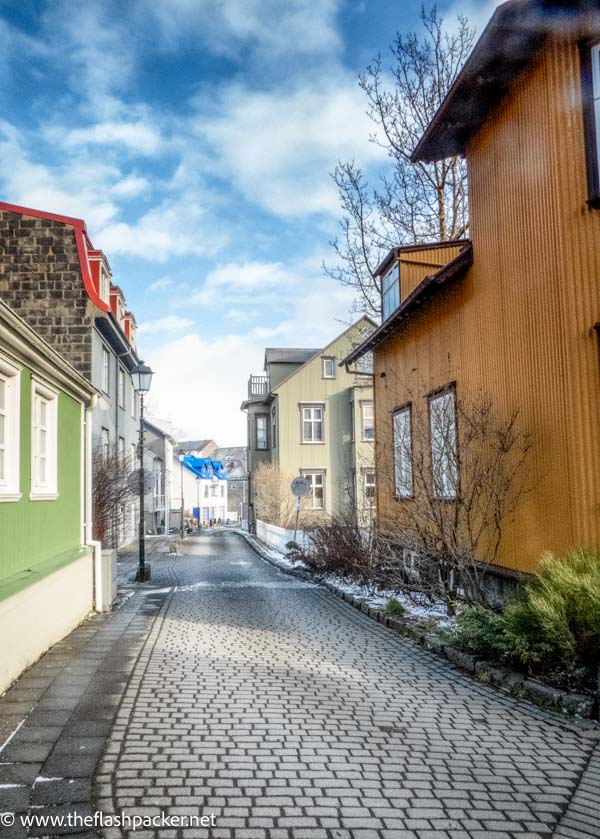
Getting Around Iceland Without a Car
Public transport infrastructure in Iceland is relatively limited.
There is no railway, only a shrinking network of long-distance bus routes provided by just a few companies. Although there are bus services during the summer months (June – August), for the remainder of the year buses are too infrequent – or non-existent – to be useful.
Because of this, many visitors hire a car and this is likely to be your cheapest option. However, it is not your only option.
As it was winter and I am not keen on driving, I didn’t hire a car. Instead, I used bus transfer services and excursions, which are very viable alternatives to driving.
Taxis are expensive and Iceland is currently Uber-free.
Getting from Keflavik Airport to Reykjavik
If you are not hiring a car, use the efficient bus transfer service to get from the airport to downtown Reykjavik.
>>> BOOK YOUR ICELAND AIRPORT BUS TRANSFER HERE
My 3-Day Iceland Solo Travel Itinerary
Like most people on a short break to Iceland, I used its capital, Reykjavik, as a base. As well as being a fabulous destination in its own right, Reykjavik is the best base from which to explore Southern Iceland.
Here is my 3-day Iceland itinerary.
DAY 1: EXPLORE REYKJAVIK
After a hearty breakfast, start exploring Reykjavik. As Iceland’s capital is so compact, it is a breeze to navigate on foot.
Don’t miss the following:
Hallgrímskirja
This geyser-shaped modern church is Reykjavik’s most iconic sight.
Make sure that you take the lift to the observation deck at the top of the church. With its tower standing 73 meters high – the tallest church in Iceland – you will get fantastic 360-degree views of Reykjavik.
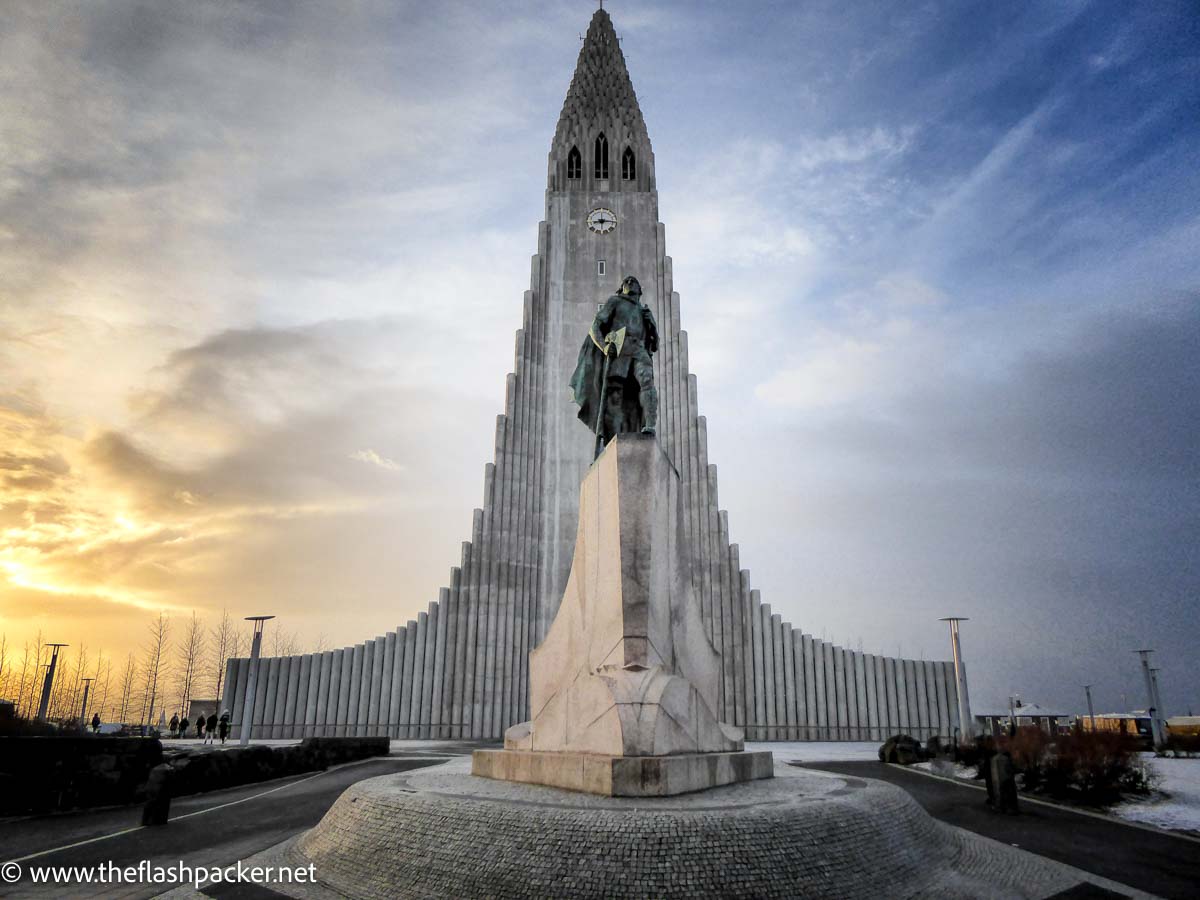
Grjóti village
The colourful buildings that you are able to see from Hallgrímskirja’s tower are clustered around Grjóti village, the oldest neighbourhood in Reykjavik.
Harpa
Reykjavik’s controversial harbourside concert hall. Take the lift to the 5th floor to fully appreciate its honeycombed glass walls and ceiling, and for great views over Reykjavik harbour.
Sólfar (“Sun Voyager”)
This sculpture, created by the artist Jón Gunnar Áranson, represents a dream Viking longship floating off to a new beginning towards the setting sun.
READ THIS NEXT: One Day in Reykjavik: The Best Things to See
DAY 2: TOUR THE GOLDEN CIRCLE
Day 2 of your Iceland itinerary and it’s time to leave Reykjavik to explore the country’s rugged interior. Iceland’s famous Golden Circle, a 300 km circular route that loops from Reykjavik into central Iceland, is not to be missed.
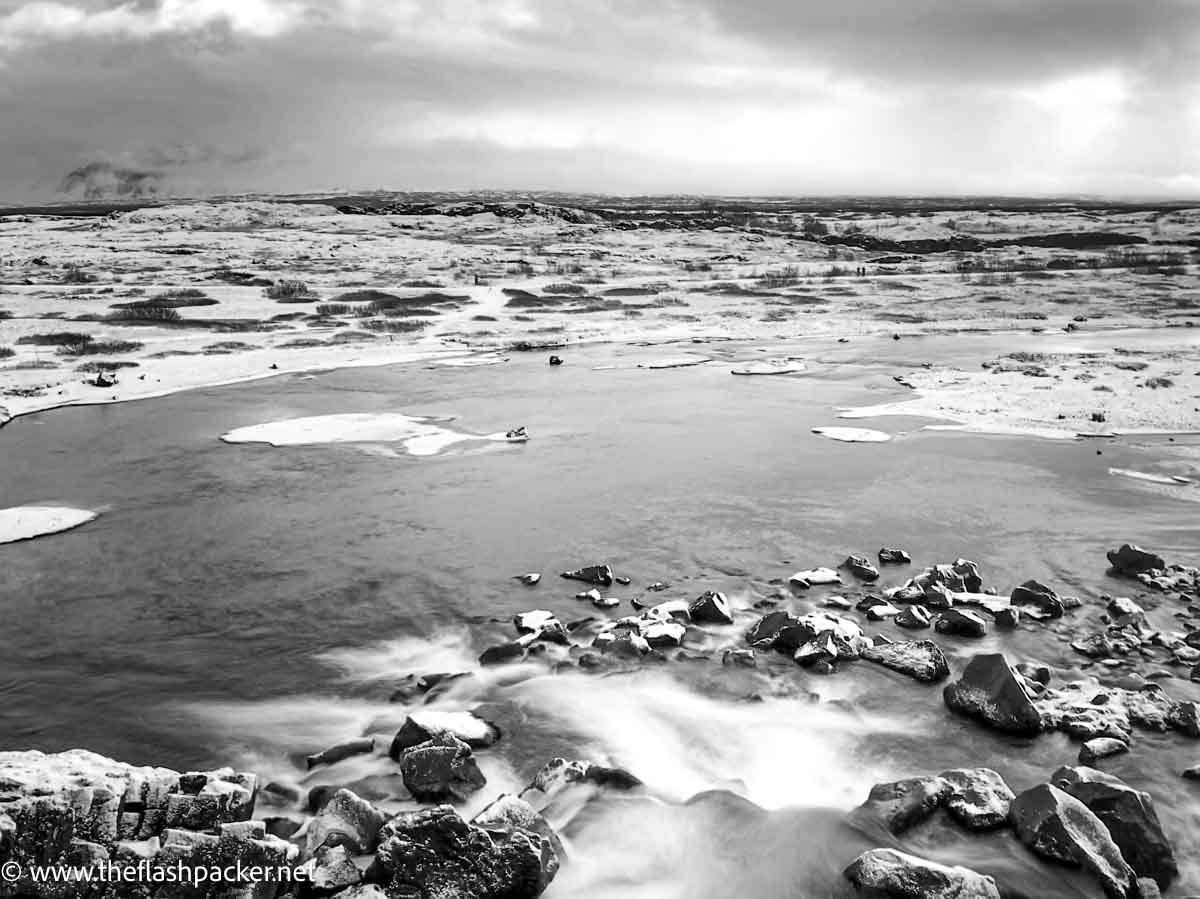
These are the main Golden Circle stops:
Thingvellir National Park
A rift valley where the American and Eurasian continental plates meet, and the site of the longest functioning parliamentary assembly.
Geysir
A thermal area of bubbling sulphurous pools where the mighty Strokkur geyser, reliably puts on a performance every five minutes or so.
Gullfoss
A dramatic waterfall formed by twin cataracts thundering into a narrow gravel canyon of the Hvitá river.
And you may also get an opportunity to pet an Icelandic horse.
READ THIS NEXT: Iceland’s Golden Circle: A Day Trip from Reykjavik
DAY 3: VISIT THE BLUE LAGOON
Views are divided on this famous natural hot spring. Is the Blue Lagoon a complete tourist trap or a must-see destination on any Iceland itinerary?
I did debate whether to go there but, being a completist, I felt that it should be included in my Iceland itinerary. Also, I wanted to make my mind up for myself.
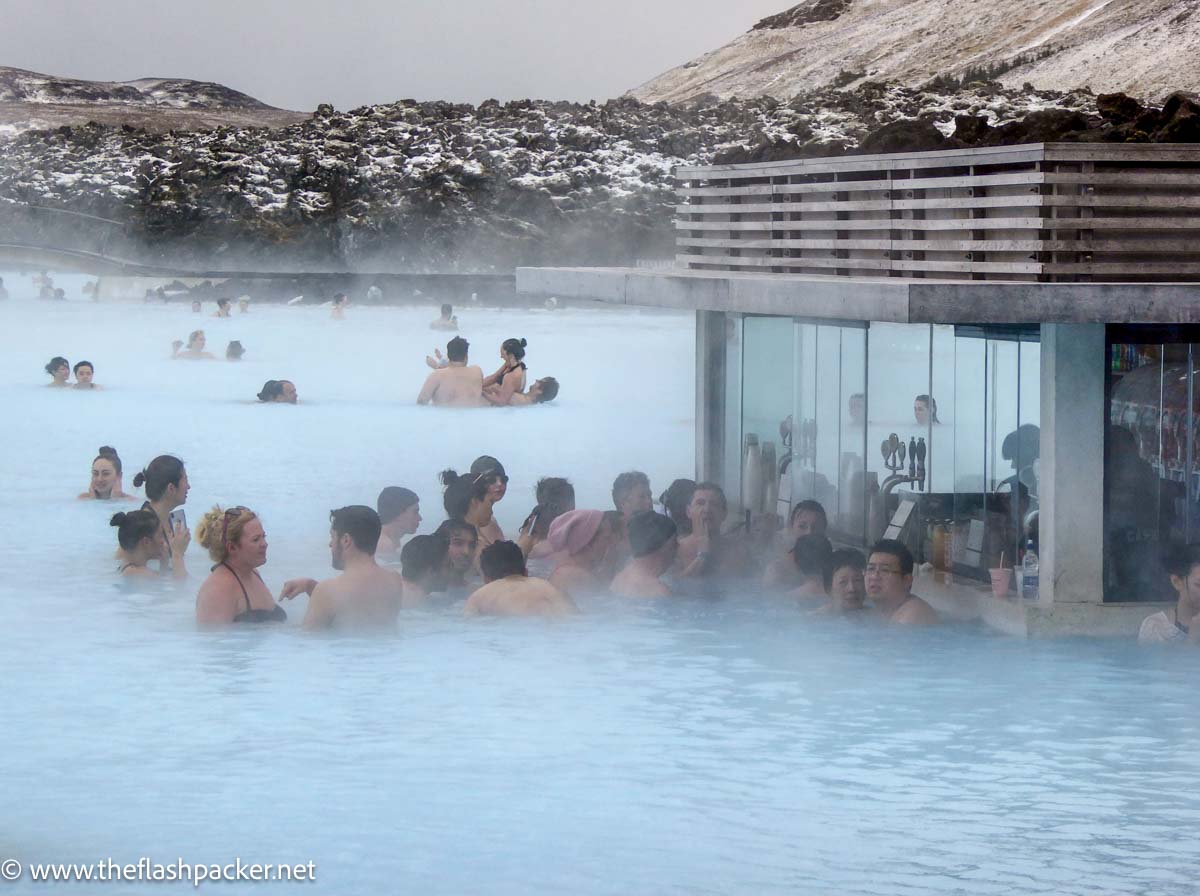
The verdict? Yes; the Blue Lagoon is a tourist trap but its steaming, milky waters set within a lava field is an unmissable sight.
READ THIS NEXT: A Guide to the Blue Lagoon: Is It Worth Visiting?
Seeing the Northern Lights in Iceland
As elusive as they may be, Iceland is one of the best places in the world to witness one of nature’s greatest spectacles: the aurora borealis or Northern Lights.

The best months to see the Northern Lights in Iceland
The best months of the year to see the Northern Lights in Iceland are between September and March. They are at their peak in September and March, thanks to the March and September equinox.
Forget about seeing them from mid-April to mid-August as the skies are light.
Northern Lights tours from Reykjavik
There is no shortage of tours to see the Northern Lights from Reykjavik.
If you can, splash out on a small group tour, rather than travelling with a coachload of people. Not only will this be a more intimate experience, but it will also offer more flexibility to chase the lights.
As complete darkness is the key to success, these tours leave late at night. Wrap up warm.
The aurora borealis is reluctant to come out to play if the skies are cloudy. Check the Northern Lights forecast for your chances of seeing this spectacle.
If there is little chance of seeing the Northern Lights, many tour companies will cancel the trip. They will also offer you a second chance to see them if you are unsuccessful on your first trip.
Here are a few Northern Lights tours that get good reviews from other travellers:
Northern Lights Bus Tour from Reykjavik
A four-hour bus tour to search for the Northern Lights. You will be invited to join another Northern Lights tour free of charge if the lights don’t come out to play.
>>> CLICK HERE TO BOOK THIS TOUR
Small-Group Premium Northern Lights Tour
Benefit from a small group size and included refreshments. Again, you will be able to schedule another Northern Lights tour free of charge if the lights don’t appear.
>>> CLICK HERE TO BOOK THIS TOUR
Where to Stay in Reykjavik
If you want to be in the thick of things, then the downtown area of Reykjavik, close to the Laugavegur shopping street, is your best bet. Here you will find most of the museums, restaurants and bars.
However, if you are a light sleeper be aware that there is a high concentration of bars that stay open until late in the weekend. But if you are also out burning the midnight oil, this won’t make any difference!
Mid-range – Hotel Frön
I stayed at this 3-star hotel on Laugavegur which is perfect if you are visiting Iceland on a budget but are looking for a bit of comfort. A big bonus was the free breakfast. Recommended.
>>> BOOK A ROOM
Here are some alternatives that I have found that may suit other budgets:
Splurge – Canopy by Hilton Reykjavik City Center
In an unbeatable location, a 2-minute walk from Laugavegur Shopping Street and 500 meters from Harpa Concert & Conference Center, this stylish 4-star hotel features a fitness centre and a bar.
>>> BOOK A ROOM
Budget – Freyja Guesthouse and Suites
To reduce your Iceland trip costs, take a look at this property, a 3-minute walk from Hallgrímskirkja Church. It has excellent online reviews and is a bargain by Icelandic standards.
>>> BOOK A ROOM
Iceland Group Tours for Solo Travellers
But what if you are not sure whether you are ready to explore Iceland independently? If that’s the case, why not join a group tour?
You’ll benefit from an expertly curated itinerary and you will gain valuable insights into the country, its history and local culture.
Keeping safe when travelling is a common fear among those taking their first solo trip. But with a group tour, there’s safety in numbers.
Finally, with ready-made travel companions, you don’t have to fear solo travel loneliness or the prospect of dining out alone.
There are lots of group travel companies out there but two companies that I have used and can recommend are Exodus Travels and Explore Worldwide!
Alternatively, join a day tour when you are out there as I did. My go-to platform is GetYourGuide, which offers a broad selection of local tours with extremely generous cancellation terms.
Can You Visit Iceland as a Solo Traveller on a Budget?
Iceland is one of the best solo travel destinations in Europe, and its potential to drain your bank account should not put you off visiting. Despite the high cost of living, you will not need to take out a second mortgage on your return from a solo trip to Iceland
Bag a good deal on accommodation and exercise self-restraint when eating and drinking alcohol out. Iceland is expensive but it is worth it every Króna.
And let’s look on the bright side.
The relatively high cost of booze means that, unlike other European cities such as Tallinn or Prague, Reykjavik is yet to become stag party central. And surely that has to be a good thing?

About Bridget
Bridget Coleman has been a passionate traveller for more than 30 years. She has visited 70+ countries, most as a solo traveller.
Articles on this site reflect her first-hand experiences.
To get in touch, email her at hello@theflashpacker.net or follow her on social media.
